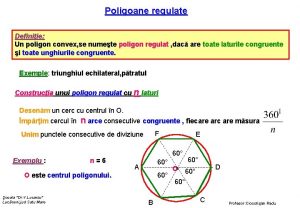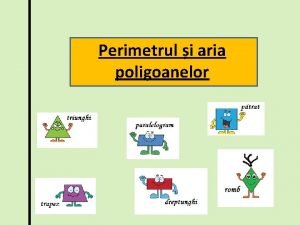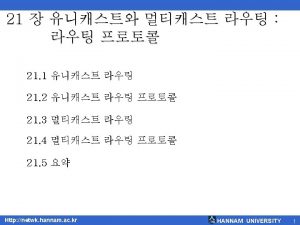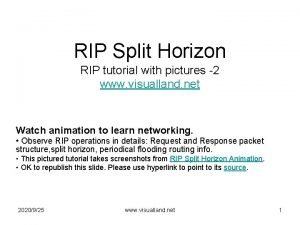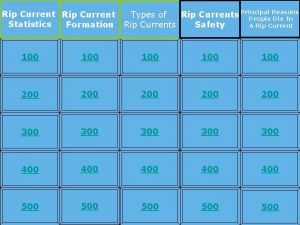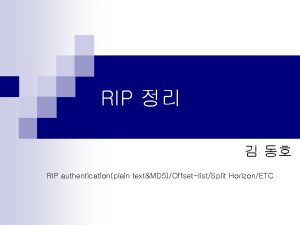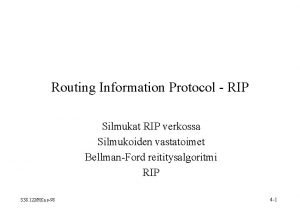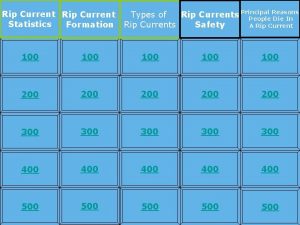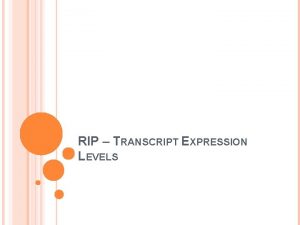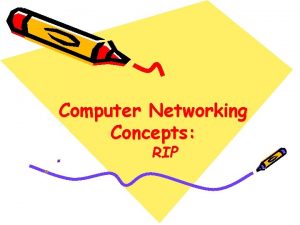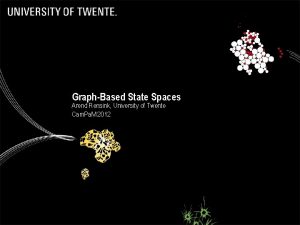Introduction to RRI Arie Rip University of Twente

















- Slides: 17

Introduction to RRI+ Arie Rip (University of Twente) Responsibility Forum Workshop Brussels, 11 February 2014

Why are we here? • Because the European Commission is drawing on the term ‘Responsible Research and Inovation’ in its activities and is pushing (“nudging”) to get it implemented • So a top-down dynamic. . . • But a variety of actors are keen to link up with RRI • Not only philosophers and sociologists who see new intellectual business opportunities

A multi-level phenomenon • An umbrella term; with a variety of governance arrangements and practices underneath it • So different levels: - policy and societal discourse; - institutions and arrangements; - ongoing/evolving practices (of scientists, industrialists, also civil society actors) • Interaction between levels • Also broader contexts and secular changes (recontextualization of science in society; unwillingness to accept every new technology)

Responsible innovation, at different levels Macro-level: societal discourse policy Ideas about future world; division of moral labour EU Code of Conduct for Responsible Nano. ST Research Meso-level: funding agencies branch organzations consortia [New roles/repertoires] Dutch MVI; extended impact statements code of conduct etc ELSA as integral part; Constructive Techn. Ass’t Micro-level: scientists (in the lab) Industrialists/firms “relevance”, ‘fictive script’ Corp. Social Resp. , transparency

Shaping responsible development • Nanotechnology – exploiting technoscientific opportunities while being ‘responsible’ (whatever that may mean) • Pressure from policy level to do so, but also initiatives from nanoscience consortia (TA in Dutch Nano. Ned and Nano. Next ) • May be impression management, but this can/will have implications • Nano-labs start presenting themselves as responsible

Thanks to Erik Fisher, STIR project, for drawing my attention to this poster.

Pan back to the 1530 s • In 1531 the Italian mathematician Nicola Tartaglia developed a theory about the relation between the angle of the shot and where the cannon ball would come down. He thought of publishing theory, but reconsidered: “The perfection of an art that hurts our brethren, and brings about the collapse of humanity, in particular Christians, in the wars they fight against each other, is not acceptable to God and to society. ” So he burned his papers (he had told his assistant Cardano about his theory, and Cardano published it a few years later). • But he changed his position, as he described in his 1538 book Nova Scientia. “The situation has changed, with the Turks threatening Vienna and also Northern Italy, and our princes and pastors joining in a common defence. I should not keep these insights hidden anymore, but communicate them to all Christians so that they can better defend themselves and attack the enemy. ” • The structure of the argument (including the topos of powerful knowledge) still applies, but is not an individual decision anymore.

Back to the present • In the Journal of Infectious Diseases, October 7, 2013, Barash and Arnon published their finding of the sequence of a newly discovered protein, but without divulging the actual sequence. • “Because no antitoxins as yet have been developed to counteract the novel C. Botulinum toxin, ” wrote editors at The Journal of Infectious Diseases, “the authors had detailed consultations with representatives from numerous appropriate US government agencies. ” These agencies, which included the Centers for Disease Control and Prevention and the Department of Homeland Security, approved publication of the papers as long as the gene sequence that codes for the new protein was left out. According to New Scientist, the sequence will be published as soon as antibodies are identified that effectively combat the toxin. • Cf. also how publication of sensitive details can be prohibited by the US National Science Advisory Board for Biosecurity, as in the case of the bird flu research by the Rotterdam team led by Fouchier.

Division of moral labour • There are organisations, articulated rules, mutual dependencies • These add up to an evolving de facto division of moral labour (Shelley-Egan and Rip 2012) • ‘Responsibility’ discourse is a way to articulate and stabilize the division-of-moral-labour aspect of our social order (Rip 1981) • The term is relatively recent (1782 in France, 1787 in Britain), and linked to emergence of bourgeois society. (‘Responsible’ is older. )

‘Responsibility’ language • Also used to attribute praise and blame, cf. Ravetz’s aphorism: • “Scientists take credit for penicillin, but Society takes the blame for the Bomb” • And there is prospective responsibility, a duty to do certain things (and avoid others) • Responsibility for progress, even if the powerful knowledge can also be misused • So: various strands that can be taken up in RRI

The new discourse • Note the shift from ‘responsibility’ to ‘responsible’, and applied to processes of research and innovation, rather than actors • Contrast with earlier debates and actions, in particular with the atomic scientists after 1945, and chemists and pollution (visible from the 1960 s onward) • Thus: blaming (and praising) less important than how to arrange our handling of emerging technologies (distributed!)

Consider RRI as an attempt at social innovation • New and uncertain, distributed. . . • Requires institutional changes, and subcultural changes. How to “push” this? • Soft command control (EU/Member states stipulating codes of conduct for RI) • But also a business proposition: to extend ‘social licence to operate’ because of credibility pressures in/of society

The innovation is still an open proposition • But actors, at various levels, start referring to the notion of responsible development and innovation in nanotechnology, • And more generally about new technologies • Some research funding agencies (in Europe) and research consortia require project proposers to say that they will conform to the EU Code on Responsible Nano-Research

RRI becomes specified – reduced? • Utilitarian ethics (as in NNI definition): maximize technology’s positive contributions and minimize negative consequences. • A neo-liberal version: avoid causing harm, then everything is OK • Narrative of containment: keep hazards at bay, then no problem with a new technology What about • ELSA studies etc. as partial compensation for old pushing new (“promising”) technology technologies?

A change in handling new technologies? • Not just nanotech. Precursors: in Human Genome Project (ELSI component), but also chemical industry’s Responsible Care Program. And now consideration of synthetic biology, geo-engineering. • Will this continue? And if so, what form will it take? At the moment, we see reductions to create some tractability: • Focus on upstream (to assure acceptance!? ) • Focus on risk issues (which appear to be more tractable than societal and ethical issues) • Add: evolving narratives of praise and blame

Governance arrangements • Evolving de facto governance, outcome of ongoing struggles, and part of them • Can become settled in institutional arrangements (cf. division of moral labour) • Such arrangements need to be evaluated, because of lock-in (path dependencies) while society (and technology) change: “Is it (still) a good arrangement? ” • Such governance arrangements refer to the de facto Constitution of our “technology-imbued” societies

In conclusion • I’ve taken you on a journey from the new discourse of RRI to changing practices, and back up to evolving divisions of moral labour and the Constitution of our societies • A key role is played by intermediary actors (collective organisations, funding agencies, monitoring bodies) • Whatever we come up with today has to be located in these evolving multi-level developments
 Arie rip
Arie rip Palabras con ra re ri ro ru
Palabras con ra re ri ro ru Uscg rri
Uscg rri University of twente biomedical engineering
University of twente biomedical engineering Osiris utwente courses
Osiris utwente courses Utwente study abroad
Utwente study abroad Webredacteur twente
Webredacteur twente Tgs utwente
Tgs utwente Volumul trunchiului de piramida
Volumul trunchiului de piramida Geus who
Geus who Poligon convex cu 8 laturi
Poligon convex cu 8 laturi Un patrat are suma lungimilor a 3 laturi de 18 cm
Un patrat are suma lungimilor a 3 laturi de 18 cm Desfasurarea cilindrului
Desfasurarea cilindrului Arie laterala prisma
Arie laterala prisma Conul
Conul Arie vissers
Arie vissers Semnul siluetei
Semnul siluetei Arie opstelten
Arie opstelten










